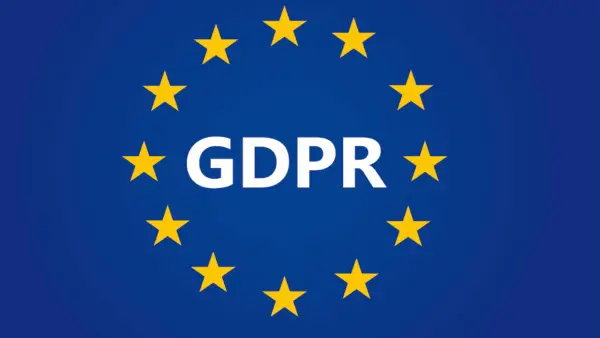What is GDPR?
The General Data Protection Regulation (GDPR) is a robust EU law designed to protect the privacy and personal data of individuals. Learn how to comply and ensure your business meets these strict standards.
- Overview of GDPR
- Who must comply with GDPR
- 12 GDPR compliance requirements
- Risk of not complying
- GDPR and Cookie Banners
- How to make your website GDPR-compliant
Overview of GDPR
The General Data Protection Regulation (GDPR) is an EU law established to protect the privacy and personal data of individuals across the European Union. Enforced since May 25, 2018, GDPR aims to give citizens greater control over their personal data and to unify data privacy laws across Europe.
GDPR sets strict guidelines for how organizations handle personal data, including obtaining explicit consent from individuals, ensuring data protection by design and by default, and allowing individuals to access, rectify, and erase their data.
Who Must Comply with GDPR?
GDPR applies to any organization, regardless of location, that processes the personal data of individuals residing in the European Union. This means that even companies based outside the EU must comply if they handle data of EU residents. The regulation covers a wide range of entities, including:
EU-Based Companies: Any organization operating within the EU, regardless of size or sector.
Non-EU Companies: Businesses outside the EU that offer goods/services to or monitor EU residents.
Public Authorities: Government bodies within the EU, excluding courts in their judicial capacity.
Large-Scale Data Processors: Companies handling large amounts of personal data, such as multinational corporations.
Special Data Handlers: Organizations dealing with sensitive data like health information, racial or ethnic origin, political opinions, and religious beliefs must adhere to stricter GDPR rules.

Understanding 12 GDPR Compliance Requirements
1. Lawful, Fair, and Transparent Processing: Ensure data is processed legally, fairly, and transparently.
2. Purpose Limitation: Collect data for specific, legitimate purposes only.
3. Data Minimization: Only gather data necessary for the intended purpose.
4. Accuracy: Keep personal data accurate and up to date.
5. Storage Limitation: Store data only as long as necessary for processing purposes.
6. Integrity and Confidentiality: Secure personal data against unauthorized access and breaches.
7. Accountability: Demonstrate compliance with GDPR principles.
8. Data Subject Rights: Respect individuals’ rights to access, correct, delete, and control their data.
9. Consent: Obtain explicit, informed consent and allow withdrawal at any time.
10. Data Protection Impact Assessments (DPIAs): Assess and mitigate data protection risks for high-risk processing activities.
11. Data Breach Notifications: Notify authorities of breaches within 72 hours if there’s a risk to individuals.
12. Data Protection Officers (DPOs): Appoint a DPO if processing large-scale sensitive data or if a public authority.
Risks of Not Complying with GDPR
Failing to comply with GDPR can result in hefty fines up to €20 million or 4% of annual global turnover, significant legal actions, and the risk of data breaches. Non-compliance can also lead to complaints from customers and employees, loss of business opportunities, and negative publicity that can damage your company’s reputation. Ensuring GDPR compliance is crucial to protect your business and maintain customer trust.
GDPR and Cookie Banners
Under GDPR, cookies that identify an individual via their device are considered personal data, requiring explicit user consent. Websites must inform users about the cookies they use and their purpose, and obtain active consent before setting any non-essential cookies. This means organizations must clearly communicate their cookie practices, typically through an easily accessible privacy policy, explaining what information is collected, why it’s collected, how it’s used, and with whom it’s shared.
Consentik helps ensure GDPR compliance by providing customizable cookie banners that make it easy to obtain and manage explicit user consent. Our tools simplify data subject rights management, maintain detailed records of data processing activities, and quickly detect and report data breaches, ensuring your business stays compliant and builds trust with customers.
How to Make Your Website GDPR-Compliant
Transparent Privacy Policy: Create a clear and detailed privacy policy that clearly outlines what personal data is collected, why, how it’s used, and who it’s shared with.
Explicit Consent: Get users’ explicit consent before collecting or using their data, using opt-in checkboxes or cookie banner. This can involve using opt-in checkboxes, cookie banners, or other mechanisms.
Data Access and Accuracy: Allow users to access, correct, and challenge the accuracy of their personal data.
Robust Security Measures: Protect personal data with encryption and secure servers to prevent unauthorized access.
Get Your Store GDPR Compliant Now
Ensure your website meets all CCPA requirements with Consentik’s comprehensive compliance tools. Protect your business and build trust with your customers effortlessly.
- Free show Cookie Banner
- Packed theme for quick setup
- Customize banner's appearance with colors, text, positions
- Prefereneces popup
- Standard categories
- Data sale opt-out
- Policy page generator
- Auto scanning cookies
- FREE +
- Google Consent Mode V2
- Auto-block tracking script
- GPC Signal
- Auto transfer cookie
- Preferences config
- Glass effect
- Delay banner
- Web Pixel
- Geolocation
- Consent Logs
- Reopen button
- Cookie Policy Page Generator
- PLUS +
- Multiple languages
- Schedule cookie scan
- Checkout block
- Multilingual banner (show a language selector)
- Admin mode
- Setup mode
- Reset Customers Consent
- Microsoft Consent Mode
- Sklik Retargeting Consent
- Quick category selector
- Blacklist pages
- ADVANCED+
- IAB TCF v2.2 banner
- Customer Consent Statistics
- Google Translate
- Scan behind password
- Headless support
- High priority support





